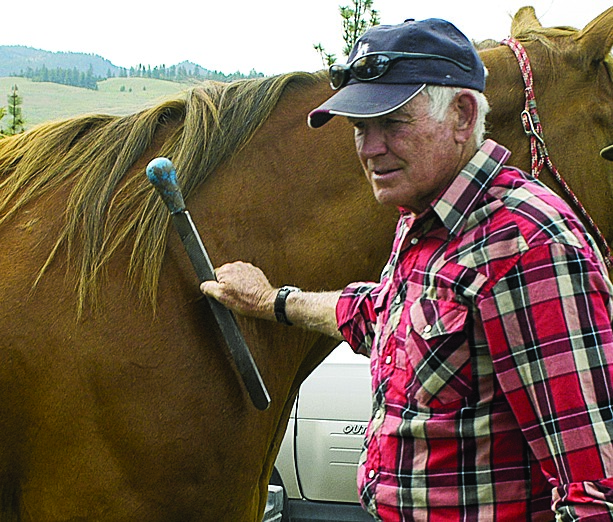Since graduating from the Colorado State University Veterinary School in 1962, farrier and vet George Platt devoted most of his years to the study and treatment of laminitis. He's had considerable success in saving the lives and relieving the pain associated with this devastating condition in hundreds of horses.
He uses a heart bar shoe for pain relief as discussed in John Dollar’s 1895 book, A Handbook Of Horseshoeing.

The heart bar shoe places pressure on the frog to prevent rotation and will push the third phalanx back toward its original position. A heart bar should be reset every 4 weeks.
Never place the heart bar on a hard frog. While you want to trim away enough frog to make it soft, but it may not be possible when the frog is hard and dry. "In these cases, I place Equi-Pak on the heart bar to make sure there’s something soft between the frog and shoe," says Platt.
Accurate placement of the heart bar is crucial and it should be located toward the rear 60% of the frog. Protecting the back part of the frog is much more important than the anterior portion.
"I can’t offer a simple rule of thumb regarding the amount of needed frog pressure," says Platt. "Some thick and heavy frogs don’t require a lot of pressure while thin and narrow frogs require more."
Use your thumbs and two fingers to determine the correct amount of needed pressure. Modify the heart bar shoe so it has contact with the frog and be prepared to reset the shoe in 2 or 3 weeks.
"With moderate rotation, I’ll apply the heart bar and resection the anterior hoof wall starting ½ to ¾ inches below the coronary band," syas Platt. "This is necessary when the heel is growing faster than the toe. It occurs when P3 rotation allows the front hoof wall to jam the coronet and reduce the blood supply. Be sure the heart bar shoe is properly placed before doing a resection since the hoof walls can spread to the sides and create a severe sinking of P3."
Avoid raising the heel or toe. Platt uses gauze pads or tape a piece of carpet to the frog for support until a farrier arrives.
Place the heart bar shoe first on the most painful foot so there is more support when you pick up the opposite foot. When it is time for a reset 2 or 3 weeks later, pull the shoe and reset it on the worst foot before removing the other shoes.
Examine the radiographs prior to shoeing. A long toe can often represent a poor trimming and shoeing job. Measure ¾- to ½-inch in front of P3 and cut the toe off at that point. A long toe often represents a poor breakover point.
For more of advice on applying a heart bar, read his article in the December 2009 issue of American Farriers Journal.







Post a comment
Report Abusive Comment